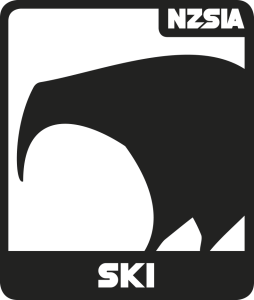Boots, Poles & Bindings
Boots
Ski boots come in a variety of styles, shapes and sizes depending on their intended use. Ski instructors generally use performance ski boots; they are based off race boot design but are made with a softer plastic which gives a more forgiving flex. Boot flex is rated in numbers; however, this number rating is not standardised between the major brands which can cause confusion. As a general rule, boots rated 100 and below are considered soft, 110-120 are rated as a moderate stiffness and 130 + is rated as a stiff boot. Skiers who ski with a high level of performance at moderate to high speeds usually use a 130+ boot; however, skiers who are lighter or shorter may use a softer boot. Additionally, some shorter skiers use boots with shorter cuffs as this allows them to still have enough leverage to flex the boot.
Boots must be fitted snug but not so tight they crush the foot and block the skier’s ability to invert/evert the ankle to create edging movements. Custom footbeds may be used to support the foot in a neutral position; however, caution must be followed when making/using footbeds as an over-supported footbed could cause the foot to become immobile. The boot cuffs should be aligned to the skier’s legs. All good boots have adjustable bolts near the ankle which can be adjusted to change the angle of the boot cuff. As a general rule, you should align your boots so there is equal room between the inside and outside of your leg and your boot cuff.
More specific boot alignment, which adjusts the angle of the sole of the boot either through shims resting on the boot board or on the base of the boot, may be used to further adjust the skier’s alignment. This work should not be done without proper consultation with an expert who can analyse your skiing and make adjustments accordingly.
Poles
Ski pole length is an important but regularly overlooked topic. Pole length should be determined by the height of your athletic stance. To determine the adequate length of your poles you should stand in your skis and boots on snow, flex into your athletic stance and place your poles into the snow where you would usually pole plant. Your arm should be at a right angle to the snow in this position; if the angle is acute or obtuse you need to make an adjustment to the length of pole you use.
Bindings
Bindings consist of two main parts: the toe piece and heel piece. The binding is designed to release the boot under certain conditions, such as a fall or a sudden twist or torque on the ski. This is important for safety, as it can prevent serious injury to the skier. The release mechanism is usually triggered by a pre-set amount of force, which varies depending on the skier’s weight, height, skiing ability, and the type of skiing they are doing.
DIN (Deutsches Institut für Normung) is a standardised system used to measure the release force of ski bindings, which helps determine the amount of force required to release the boot from the ski in the event of a fall or crash.
A skier’s DIN setting is usually set by a certified technician or ski shop based on their skill level and the type of skiing they plan to do. Skiers who prefer aggressive, high-speed skiing or who ski in difficult terrain may require a higher DIN setting than those who ski at a slower pace or on less challenging terrain.
It’s essential to have the correct DIN setting as it helps prevent injuries caused by ski bindings that do not release when they should or release too easily, causing falls. A binding with a DIN setting that’s too high can also increase the risk of injury during a fall. Therefore, it’s important to get your bindings checked and adjusted regularly by a qualified technician to ensure they’re set up correctly.

